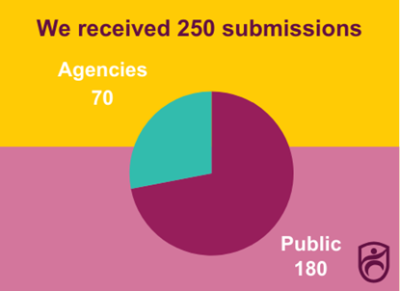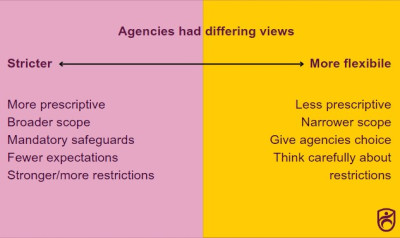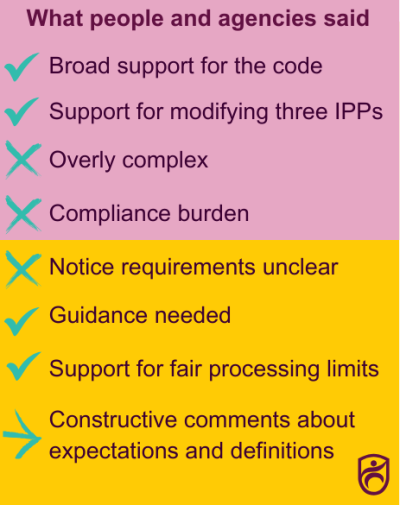Our website uses cookies so we can analyse our site usage and give you the best experience. Click "Accept" if you’re happy with this, or click "More" for information about cookies on our site, how to opt out, and how to disable cookies altogether.
We respect your Do Not Track preference.
New Zealand doesn’t yet have specific privacy rules for biometrics. We’ve outlined our proposal in an exposure draft biometrics code of practice under the Privacy Act 2020. Between 10 April - 8 May 2024 we asked New Zealanders to have their say on how that might work by reviewing our exposure draft and giving us feedback.
We think the information below will be most interesting to people that made submissions. Read more about biometrics and the history of our biometrics work.

Almost every submission from members of the public told us that people were concerned about the use of biometrics in New Zealand. There was broad support for the proposed rules in the draft code.

Agencies were generally supportive of the code proposals and for the three major modifications to the IPPs that we’d outlined.

Some submitters thought the current IPPs already catered for using biometric technologies and wanted us just to focus on developing guidance.

Fair processing limits seemed fair
There was generally strong support for the three fair processing limits, which would restrict some uses of biometric classification. Some agencies helpfully gave constructive comments about exceptions and definitions.
Less complexity would be useful
Allowing for the fact that biometric processing is a technical topic, some submitters still thought the draft code it seemed overly complex. They thought it could be simplified and that we could revise the technical terms. This would make it clearer and more easily understood.
The notice requirements would need to be better signposted
There was support for somewhat stronger notification and transparency obligations, but agencies weren’t quite clear about the notice obligations as drafted. They also said that how we’d explained it seemed repetitive.
Clear, detailed guidance will be important
Another major theme was that agencies want guidance so that they can understand how to apply and comply with the rules. They want to be super clear about:
The private sector was worried about compliance burden
The private sector flagged risks around compliance burden and costs.
Your feedback told us where we need to review the policy proposals. We’ll do that alongside our other work. That will include:
Thanks to everyone’s feedback, we will continue working on the proposals informed by the we’ve got clear direction about what may need to be changed or reworked, which is what we’ll do now.

Read the full report on submissions we received about an exposure draft of a biometrics code.
The Privacy Commissioner expects to announce his decision on whether he will go ahead with issuing a biometrics code of practice for statutory consultation, later this year.
If you want to contact us about this work please email biometrics@privacy.org.nz